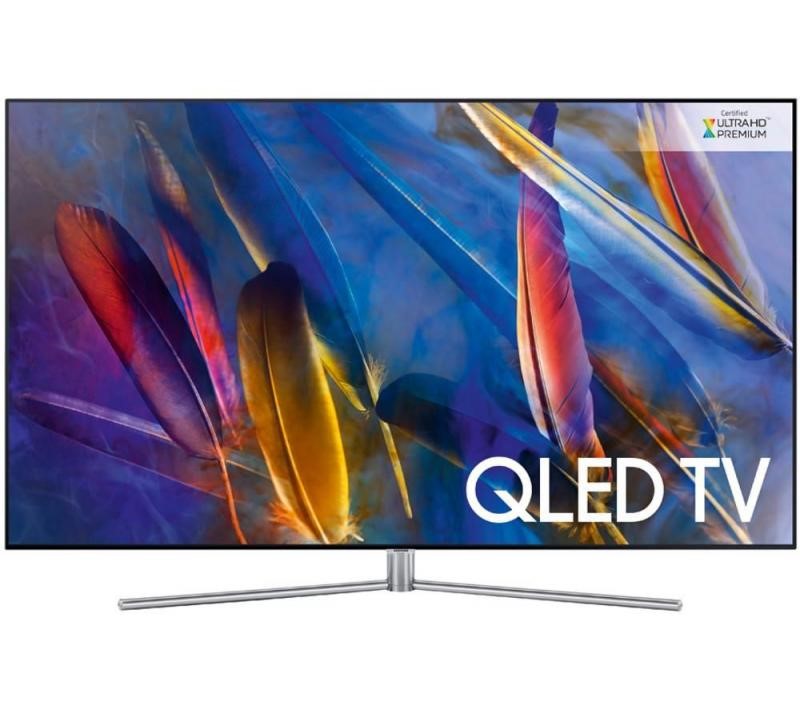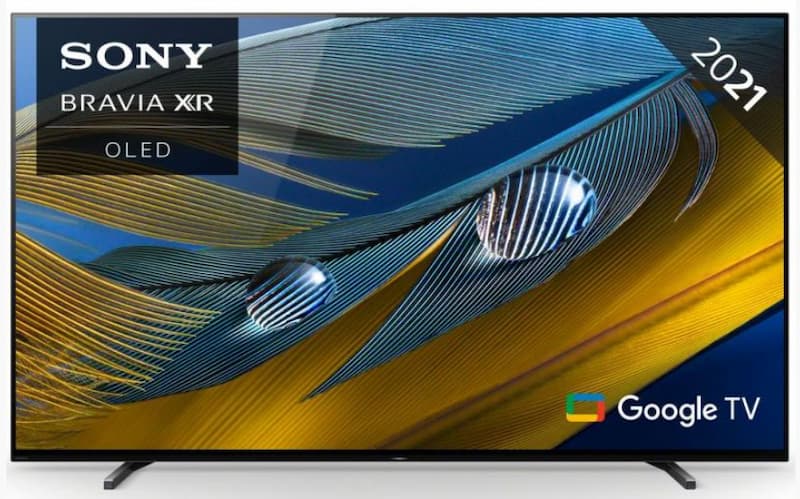Nowadays, there are a lot of options for innovative and high-tech TVs, which can make the search for a brand-new set harder than ever. One of the elements to consider when you’re on the market for a television is the type of screen you want.
At Cheap TVs, we want to help you narrow down your choices and help you make a decision, which is why we’re looking into the different screens you have at your disposal.
OLED and QLED are two of the most popular options, having been at the forefront of LED/LCD technology for years now. But do you know what this tech is all about? Do you know which screen is better for you? Is it even worth it to buy an OLED or a QLED? Take a look to find out.
What is QLED TV?
The LED part of QLED stands for Light Emitting Diode. This is the lighting system used in the majority of sets for years now. However, the important part of QLED systems is the Q, which stands for quantum dot.
Quantum dots provide a different way of producing colour in comparison to the usually limited combination of white LEDs and colour filters.
These dots range between 2 and 10 nanometres in diameter and, depending on their size, can create a range of different colours. As an example, the smallest dots focus on blue and the larger ones focus on red.
Quantum dots are minute semiconductor particles, so small that their optical and electric properties differ from other larger particles. These dots emit light from specific frequencies of light applied to them. The dots exhibit properties somewhat similar to a mix between semiconductors and discreet molecules; smaller quantum dots (radius of 2-3nm, for example) emit shorter wavelengths that result in blue and green colours, while longer wavelengths (5-6nm) result in colours like orange and red.
These tiny crystals deliver a massive upgrade in colour and brightness due to a powerful glow that shines through them. Because they are so small, the naked eye cannot see them unless they’re combined together through a TV screen.
These dots are able to produce a much heavier saturation and precisely focus on defined primary colours from blue LEDs than you can get from the broad and somewhat imprecise light spectrum from normal LEDs. The brightness and colour intensity aren’t watered down; which is why quantum dots are more commonly being adopted as the ‘go-to’ solution for high-quality colour and dynamic range for TVs.
It is important to note that quantum dot isn’t a specific category of TV – it is a technology on the high end of 4K TVs. You won’t be choosing between a 4K and a quantum dot TV, but a 4K TV with quantum dots or without.
What is OLED TV?
In an OLED TV, the LED part is the same; Light Emitting Diodes. However, the O stands for Organic. A television with this type of screen will have a luminescent layer of organic compound that emits light in response to an electric current. The organic layer is placed between two electrodes and, at least one of them, is transparent.
These electrodes correspond to an anode and a cathode, which are deposited on a coating. The battery or power supply from the device (which contains the OLED) applies a voltage across the diodes, and some electric current flows from the cathode to the anode through the organic layers. The cathode then gives electrons to the emissive layer or organic molecules, emitting light.
An OLED display works without a backlight because it emits visible light, meaning it can display deep levels of black. It can also be thinner and lighter than an LCD (Liquid Crystal Display), as the components of OLED are only around 100-500 nanometres – around 200 times smaller than a human hair. This is ideal if you’re looking for a TV you can mount on your wall.
OLED is an offshoot of existing conventional LED technology so, again, you won’t be buying an OLED TV exactly, but an LED TV with OLED technology. You can browse our range of cheap OLED TVs and cheap LED TVs in our website.
What’s the Difference Between QLED and OLED?
Similar to the big battle of LCD Vs Plasma TVs back in the day, the great screen debate is on again, only this time it’s between QLED and OLED screens.
To summarise in one sentence, QLED is a slight tweak on existing LCD technology while OLED is completely different. The key phrase in all of this is ‘self-emitting’.
As we now know, OLED stands for Organic Light Emitting Diode; this technology uses a carbon-based film between two conductors that emit its own light when the current is passed through. Since the pixels themselves are producing the light, when they need to be black, they are in fact completely switched off. This means no LCD Backlight, realistic blacks, ‘infinite’ contrast, quick refresh rates and muted brightness.
The inorganic quantum dot light-emitting diodes in a QLED panel do not emit their own source of light but instead, are illuminated by a backlight – just like any LCD TV.
Which Brands Support QLED and OLED?
QLED was pioneered by Samsung in 2016, and the name is exclusive to this brand. Currently, you can find quantum dot displays in many of Samsung’s high-end sets.
You’re not limited to this brand if you prefer something else, as there are many TVs with QLED technology on the market. This is because smaller brands like Sony and Hisense are allowed to sell QLED TVs after establishing a partnership with Samsung.
OLED TVs are LG’s speciality, so you can expect to see a wide range of sets that sport this screen. However, many other world-class brands sell OLED screens as well, including Sony, Philips and Panasonic, since LG creates OLEDs and sells them on to other companies.
One thing that both QLED and OLED have in common is that they’re only available in larger screens. TV quality will also vary depending on the brand because each company has its own technology, including image processing tech.
What are the Pros and Cons of QLED?
There are several benefits and downsides to QLED technology, and we’re looking more closely into some of them in this article. If you’d like to learn more about this list or about a particular feature of QLED TVs, please don’t hesitate to contact us.
Pros of QLED TVs:
- These screens have brilliant whites so you can see all image details with ease.
- QLED displays offer deep, vibrant colours, so any content you watch is of the highest possible quality.
- The ultra-bright displays (1,500 nits) allow you to enjoy a great viewing experience even if the room has too much light.
- There’s a large pool of QLED and LED screens to choose from, so you’ll easily be able to find the right price point for you.
Cons of QLED TVs:
- They’re not as slim as OLEDs (modern screens still look sleek and can easily be the focal point of a living room).
- QLEDs can be overly bright at times, especially if you want to watch a movie in the dark.
- The blacks are not as deep, so you may lose a little bit of picture quality if a scene is very dark.
- These TVs also have slower refresh rates.
And What are the Pros and Cons of OLED?
There are also many pros and cons to OLED displays, some of which include:
Pros of OLED TVs:
- OLEDs are lighter and thinner, so you have more options to wall-mount your TV if you prefer.
- The pixels are self-lighting as well, so there’s no need for a backlight.
- OLED screens offer more convincing blacks, which creates more image depth.
- These TVs have higher refresh rates than QLEDs and LEDs.
- OLED displays are judder and burl-free, which allows them to provide an immersive experience like no other.
Cons of OLED TVs:
- There is less variety when it comes to OLED screen sizes, so you may not find the right one for you.
- The brightness of OLEDs is more muted (1,000 nits) when compared to QLEDS.
- OLEDs tend to be more expensive as well.
Which Display is Better for You?
As we’ve just seen, there are several pros and cons to each type of display, which can make it more difficult to make a decision. However, one may be more suited to certain situations than the other.
For example, OLED screens are great if you’re looking for an immersive cinematic experience because they offer deeper blacks, rich colours and high contrast. The end result is a beautiful image that will make you feel you’re right there in the action. OLEDs also perform incredibly well in the dark.
The response time of your TV is faster with OLEDs, since the pixels can change states quickly, allowing your TV to respond to your commands faster than with other displays. Great if you like to constantly change the channel or access additional devices.
These types of screens may also have the edge in regard to viewing angles, because the image performs well even in off-centre angles. This makes them a top choice for gamers, as you can make the most of the whole screen.
When it comes to QLED displays, you may find they have the advantage in brighter rooms, as they offer a high level of brightness. This makes QLEDs great to watch sports with the whole family or with friends, and also a fantastic option for everyone wanting to make use of the apps on their cheap smart TV to exercise or play music.
QLED screens also provide stunning colour accuracy, offering a beautiful image with well-saturated colours and gorgeous brightness. What this means is that your favourite movies and TV shows will never look better! Lastly, OLED displays are less susceptible to issues like screen burn-in as well, so you don’t have to worry about leaving them on for a long time.
Looking for a TV with brilliant colour performance and details like you wouldn’t believe? Both QLED and OLED are a good option for you. Which one you choose will depend on price, personal preference and, of course, the end use of the TV.
We stock a large number of televisions at Cheap TVs for every taste, whether you want any of these displays, 4K and even 3D TVs. You can find all the information you need about the specs of each TV on our website, but let us know if you have any questions and we’ll be happy to help.






